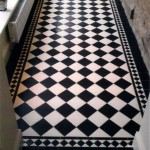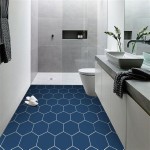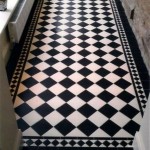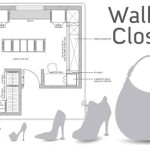Here is an article about Open Floor Plan House Ideas:
Open Floor Plan House Ideas: Maximizing Space and Flow
Open floor plans have become increasingly popular in contemporary home design. This architectural style emphasizes the elimination of walls and barriers between living spaces, fostering a sense of spaciousness and connectivity. An open floor plan typically integrates the kitchen, living room, and dining area into a single, unified space. This design offers numerous advantages, but also requires careful consideration of various factors to ensure functionality, aesthetics, and overall comfort. This article will explore several ideas for creating a successful open floor plan, addressing key aspects such as zoning, lighting, furniture selection, and storage solutions.
Zoning and Defining Spaces Without Walls
One of the primary challenges in an open floor plan is defining distinct zones for different activities without the use of traditional walls. Without physical barriers, the space can feel overwhelming or lack clear purpose. Effective zoning is crucial for creating a cohesive and functional living environment. Several strategies can be employed to achieve this.
Furniture Arrangement: Strategically placed furniture can act as visual dividers. A large sectional sofa, for example, can delineate the living room area from the dining space. Similarly, a kitchen island can create a natural boundary between the kitchen and the living or dining areas. Consider the size and scale of the furniture in relation to the overall space. Overly large pieces can make the area feel cramped, while too-small furniture may get lost in the openness.
Area Rugs: Area rugs are an excellent tool for defining specific zones. A rug placed under the dining table immediately separates the dining area from the adjacent living space. Different rug patterns and colors can further emphasize the distinction between zones. Ensure that the rug is appropriately sized for the furniture it encompasses. Ideally, all the main furniture pieces within a zone should have at least their front legs on the rug.
Changes in Flooring: Transitioning between different flooring materials can visually separate spaces. For instance, using hardwood flooring in the living and dining areas and tile in the kitchen can clearly define the kitchen zone. The change in texture and color provides a subtle yet effective demarcation.
Varying Ceiling Heights: While more complex to implement, varying ceiling heights can create a dramatic sense of separation. A dropped ceiling above the dining area or a vaulted ceiling in the living room can visually distinguish these zones. Consider the architectural limitations and costs associated with this approach.
Partial Walls or Screens: Instead of complete walls, consider using partial walls or decorative screens to create a sense of separation without completely closing off spaces. A half-wall or a decorative screen can provide privacy while still allowing light and air to flow through. These elements can also serve as focal points or display areas.
Color Palette Variations: Subtle variations in the color palette can help define different zones. Using different shades of the same color or complementary colors in different areas can create a sense of cohesive flow while still highlighting the distinction between zones. Avoid using drastically different colors that might create a jarring effect.
Lighting Strategies for Open Floor Plans
Lighting plays a crucial role in an open floor plan, not only for illumination but also for defining zones and creating ambiance. A well-lit open floor plan feels inviting and functional, while poorly planned lighting can lead to a space that feels cold, unwelcoming, or poorly utilized.
Layered Lighting: The key to effective lighting in an open floor plan is layering. This involves combining different types of lighting to create a balanced and versatile system. Layered lighting typically includes ambient lighting, task lighting, and accent lighting.
Ambient Lighting: Ambient lighting provides overall illumination for the space. Recessed lighting, pendant lights, and chandeliers are common choices for ambient lighting. The placement of these fixtures should ensure even distribution of light throughout the open floor plan. Dimmers are highly recommended for ambient lighting to allow for adjustable brightness depending on the time of day and the desired mood.
Task Lighting: Task lighting focuses on illuminating specific work areas, such as the kitchen countertop or a reading nook. Under-cabinet lighting, pendant lights over the kitchen island, and desk lamps are examples of task lighting. The intensity and direction of task lighting should be tailored to the specific task being performed.
Accent Lighting: Accent lighting highlights architectural features, artwork, or decorative objects. Track lighting, spotlights, and wall sconces can be used for accent lighting. The strategic placement of accent lighting can draw attention to focal points and add depth and interest to the space.
Natural Light Maximization: Maximize the use of natural light by keeping windows and doors unobstructed. Light-colored walls and flooring can reflect natural light and brighten the space. Consider using window coverings that allow for adjustable light control, such as blinds, shades, or sheer curtains.
Smart Lighting Systems: Smart lighting systems offer enhanced control and flexibility. These systems allow you to control the brightness, color temperature, and even the color of your lights using a smartphone or voice commands. Smart lighting can be programmed to automatically adjust based on the time of day or activity, providing convenient and energy-efficient lighting solutions.
Furniture Selection and Placement in Open Concepts
The furniture in an open floor plan not only needs to be aesthetically pleasing but also functional and scaled appropriately to the overall space. The selection and placement of furniture can significantly impact the flow, comfort, and visual appeal of the open floor plan.
Scale and Proportion: Choose furniture that is proportionate to the size of the open floor plan. Overly large furniture can overwhelm the space, while too-small furniture may look insignificant. Consider the dimensions of the furniture and how it will relate to the surrounding areas. Use painter's tape to mark out the footprint of furniture on the floor to visualize the space it will occupy.
Traffic Flow: Consider the traffic flow when arranging furniture. Ensure that there are clear pathways between different zones and that furniture does not obstruct movement. Avoid placing furniture in doorways or creating bottlenecks. A well-planned furniture arrangement allows for easy and comfortable navigation throughout the open floor plan.
Conversation Areas: Create distinct conversation areas within the open floor plan. Arrange seating in a way that encourages interaction and communication. A grouping of sofas and chairs around a coffee table can define a comfortable and inviting living room area.
Multifunctional Furniture: Multifunctional furniture is particularly useful in open floor plans, where space is often at a premium. A sofa bed can provide extra sleeping space for guests, while a coffee table with storage can help keep the living area organized. Ottomans with storage, expandable dining tables, and nesting tables are other examples of multifunctional furniture.
Consistency in Style: Maintain a consistent style throughout the open floor plan to create a cohesive and harmonious look. Choose furniture pieces that complement each other in terms of color, material, and design. While variety can add interest, too much diversity can create a cluttered and disjointed appearance. Consider a unifying theme or color palette to tie the different zones together.
Focal Points: Create focal points within each zone to draw the eye and add visual interest. A fireplace, a large piece of artwork, or a statement furniture piece can serve as a focal point. Arrange furniture and accessories around the focal point to create a balanced and visually appealing composition.
By carefully considering these aspects – zoning, lighting, and furniture – homeowners can create open floor plans that are both beautiful and functional, enhancing the overall living experience.

House Design Trends What S Popular In Current Floor Plans Extra Space Storage

Pros And Cons Of An Open Concept Floor Plan Generation Homes Nw

Modern Open Floor House Plans Blog Eplans Com

Open Floor Plans Build A Home With Smart Layout Blog Dreamhomesource Com
:max_bytes(150000):strip_icc()/1660-Union-Church-Rd-Watkinsville-Ga-Real-Estate-Photography-Mouve-Media-Web-9-77b64e3a6fde4361833f0234ba491e29.jpg?strip=all)
18 Open Floor House Plans Built For Entertaining

Modern Open Floor House Plans Blog Eplans Com

Simple Design Ideas To Create An Outstanding Open Floor Plan Lita Dirks Co Award Winning Interior And Merchandising Firm

30 Gorgeous Open Floor Plan Ideas How To Design Concept Spaces

Online House Floor Plans Your Best Guide To Home Layout Ideas

Pros And Cons Of Open Concept Floor Plans Hgtv







